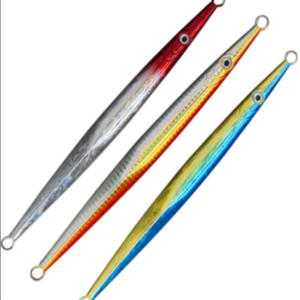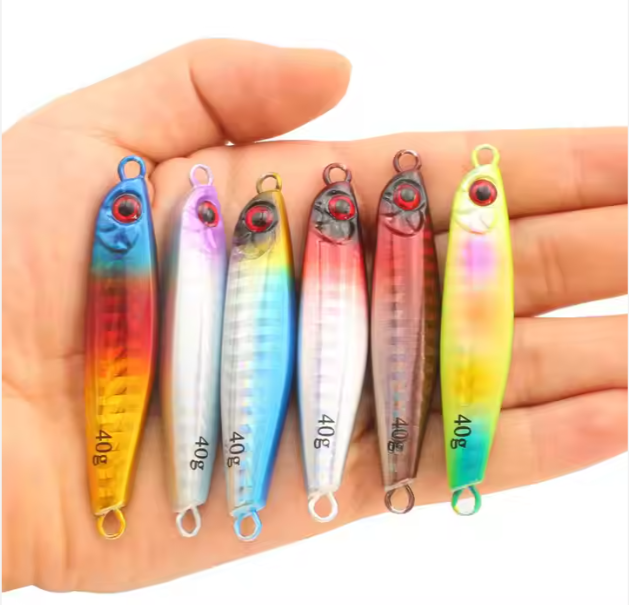Smano jigs blanks 3d fishing lure eyes jigs artificial baits slow jigging fishing luresFast For Sale
追加情報
| 色 | optional |
|---|---|
| Material | Lead, metal |
| Weight | 40g,60g,80g |
| Model | TX-10 |
| Condition | unprinted |
| Length | 6.5/7.5/8.5cm |
| Package | PVC Bag |
Product Details:
Metal jigs also have a distinct advantage in being able to vertically fish in and around fish-holding structure without any need to move off of it. Conversely, trollers constantly must keep moving for their lures to be able to attract fish. They cannot remain over structure for any meaningful period.
Here’s a more detailed comparison of these two techniques:
Metal Jigging
Metal jigs are designed to mimic the erratic, darting movements of small baitfish, making them particularly effective for species that are attracted to quick, vertical motions. This technique is all about staying directly above the fish-holding structure, like reefs, wrecks, or drop-offs, and using short, vertical lifts or “jigging” motions to attract fish. Since the angler remains stationary, it allows for a precise, controlled presentation that can work wonders around structures where fish tend to hide.
One major advantage here is flexibility. With metal jigging, you can quickly change depths, targeting fish from the surface all the way to the bottom, which is useful for fishing in areas with varied underwater terrain. Jigging also helps avoid snagging since the lure is actively moved up and down, reducing the chances of it getting caught in rocks or vegetation. This technique is especially effective for species like snapper, grouper, or amberjack, which tend to hug the bottom or stay near underwater structures.
トローリング
Trolling, on the other hand, is all about covering water. By moving at a constant speed and towing lures or bait behind the boat, anglers can cover large areas, which makes trolling highly effective for pelagic fish species that roam open water, like tuna, wahoo, and marlin. However, the need for continuous movement means that it’s difficult to hold position over a specific structure for long, limiting trolling’s effectiveness for fish that stay close to one spot. Trolling often requires specialized equipment, including downriggers to control lure depth and outriggers to spread lures apart.
Another aspect of trolling is the visual stimulation it creates. The moving lures create a “chase” effect, which is especially attractive to fast-swimming, predatory fish. But trolling can miss out on fish in smaller, more concentrated areas like reefs or ledges, where metal jigging has the upper hand.
Choosing Between Jigging and Trolling
Each technique has its strengths depending on the target species and fishing environment. Metal jigging is ideal when targeting bottom dwellers or when there’s a need to work a specific area with precision, while trolling is better for covering wide, open areas where fish are on the move. Anglers can often combine these methods based on the conditions, using trolling to locate fish and then switching to jigging once they find structure where fish might be holding.
So, while both techniques are effective, metal jigging offers a level of accuracy and depth control that trolling can’t, especially in structure-heavy areas where fish might be hiding.
関連商品
-

Laser Coating Cast Jig with Hooks for Saltwater Colorful Metal Lead Bait for Boat Fishing Lure
-

3D Eye Metal Jig Lure Artificial Hard Kabura Slider Jig Head for Ocean Boat Zander Fishing 150g Bottom Fishing Weight
-

Metal Jig Lure Fishing Jigs Saltwater Metal Long Casting Shore Jigging Fishing Lures
-

Metal Jig Jigging Lure Spoon Bait with Feather New Casting Hook Lead




